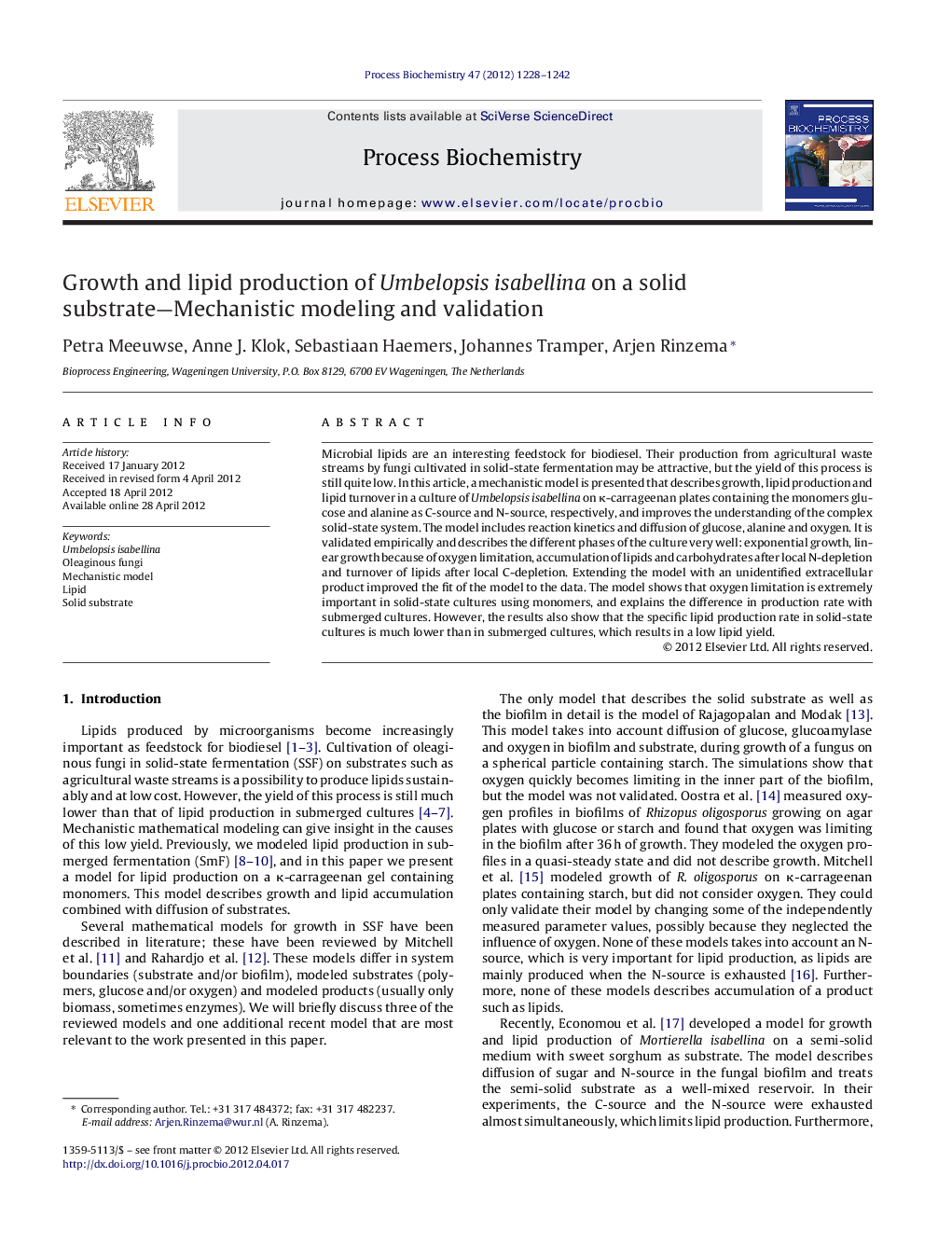| کد مقاله | کد نشریه | سال انتشار | مقاله انگلیسی | نسخه تمام متن |
|---|---|---|---|---|
| 35078 | 45073 | 2012 | 15 صفحه PDF | دانلود رایگان |

Microbial lipids are an interesting feedstock for biodiesel. Their production from agricultural waste streams by fungi cultivated in solid-state fermentation may be attractive, but the yield of this process is still quite low. In this article, a mechanistic model is presented that describes growth, lipid production and lipid turnover in a culture of Umbelopsis isabellina on κ-carrageenan plates containing the monomers glucose and alanine as C-source and N-source, respectively, and improves the understanding of the complex solid-state system. The model includes reaction kinetics and diffusion of glucose, alanine and oxygen. It is validated empirically and describes the different phases of the culture very well: exponential growth, linear growth because of oxygen limitation, accumulation of lipids and carbohydrates after local N-depletion and turnover of lipids after local C-depletion. Extending the model with an unidentified extracellular product improved the fit of the model to the data. The model shows that oxygen limitation is extremely important in solid-state cultures using monomers, and explains the difference in production rate with submerged cultures. However, the results also show that the specific lipid production rate in solid-state cultures is much lower than in submerged cultures, which results in a low lipid yield.
► We modeled growth and lipid production in oleaginous fungi on a solid substrate.
► The model includes diffusion of nutrients and oxygen in the substrate and the fungal biofilm.
► The model was validated with carrageenan plate cultures of Umbelopsis isabellina.
► Oxygen is the rate-limiting nutrient in the system.
► The specific lipid production rate found was much lower than in submerged cultures.
Journal: Process Biochemistry - Volume 47, Issue 8, August 2012, Pages 1228–1242